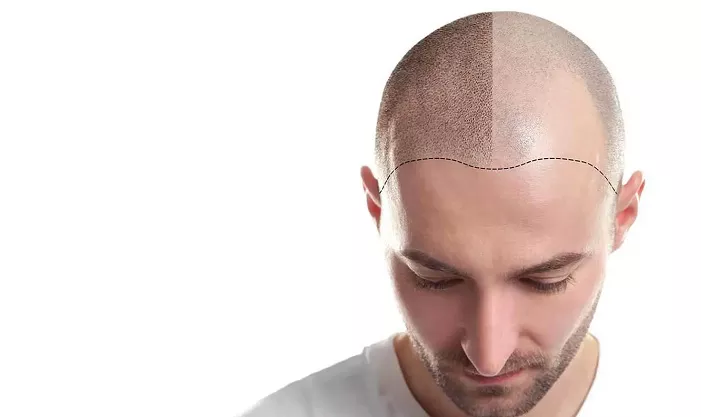Hair loss is a common concern that affects millions of people around the world, leading to a significant impact on their self – esteem and quality of life. Hair transplant has emerged as a popular solution for those seeking to restore their hair. In this article, we will explore in detail whether hair transplant really works.
Understanding Hair Transplant Procedure
The Basics of Hair Transplant
Hair transplant is a surgical procedure that involves moving hair follicles from one part of the body (usually the back or sides of the head, known as the donor area) to the balding or thinning areas (recipient area). There are two main techniques: follicular unit transplantation (FUT) and follicular unit extraction (FUE).
FUT: In this method, a strip of skin containing hair follicles is surgically removed from the donor area. The follicles are then dissected under a microscope and transplanted into the recipient area.
This technique can provide a large number of follicles in one session but leaves a linear scar at the donor site.
FUE: Here, individual hair follicles are directly extracted from the donor area using a specialized punch tool. These follicles are then transplanted to the desired area. FUE is less invasive than FUT and leaves minimal scarring, but it may be more time – consuming and may not be suitable for large – scale transplants.
Success Rates of Hair Transplant
Factors Affecting Success
The success of a hair transplant depends on several factors.
Donor Hair Quality: The quality of the hair follicles in the donor area is crucial. If the donor hair is thick, healthy, and has good growth potential, the chances of a successful transplant are higher. For example, hair from the back of the head usually has better genetic resistance to balding compared to hair on the top of the head in androgenetic alopecia cases.
Surgeon’s Skill: The expertise of the surgeon performing the transplant plays a significant role. A skilled surgeon will be able to accurately extract and transplant the follicles, ensuring proper placement and minimal damage. They will also be able to assess the patient’s hair characteristics and design a suitable transplant plan.
Patient’s Health: The overall health of the patient can impact the success of the transplant.
Conditions such as diabetes, autoimmune disorders, or poor blood circulation can affect the healing process and the survival rate of the transplanted follicles. Additionally, lifestyle factors like smoking, which can reduce blood flow to the scalp, may also have an adverse effect.
Statistics on Success Rates
On average, hair transplant procedures have relatively high success rates. Studies have shown that with proper technique and patient selection, success rates can range from 80% to 95%. However, it’s important to note that these success rates are often based on the survival and initial growth of the transplanted follicles. The long – term success also depends on the patient’s ability to maintain the health of the transplanted hair.
Long – Term Results of Hair Transplant
Hair Growth and Appearance
In the long term, a successful hair transplant should result in natural – looking hair growth. The transplanted hair should blend seamlessly with the existing hair, both in terms of color, texture, and direction of growth.
Initial Growth: In the first few months after the transplant, there may be some shedding of the transplanted hairs, which is normal. New hair growth usually starts within 3 – 4 months, and the hair continues to thicken and grow over the next 6 – 12 months. By 12 – 18 months, the transplanted hair should reach its full maturity.
Maintenance: The transplanted hair will follow the normal hair growth cycle, which means it will continue to grow, rest, and shed. To maintain the results, patients need to take good care of their hair. This includes using gentle shampoos, avoiding excessive heat styling, and protecting the scalp from the sun.
Potential Complications and Their Impact
While hair transplants are generally safe, there are some potential complications that can affect the long – term results.
Infection: Although rare, an infection at the transplant site can lead to scarring and loss of transplanted follicles. Prompt medical treatment is essential if any signs of infection, such as redness, swelling, or discharge, are noticed.
Scarring: As mentioned earlier, FUT can leave a linear scar, and even FUE can cause some minor scarring in the donor area.
Scarring can be a concern if it affects the appearance of the scalp or if it leads to limited availability of donor hair for future potential transplants.
Unnatural Appearance: If the transplant is not done properly, the hair may grow in an unnatural direction or pattern, giving a “pluggy” look. This can be avoided by choosing an experienced surgeon and having a detailed pre – transplant consultation.
Patient Satisfaction and Psychological Impact
Improved Self – Esteem
One of the most significant benefits of a successful hair transplant is the improvement in the patient’s self – esteem. Many patients report feeling more confident and less self – conscious about their appearance after the procedure. This psychological boost can have a positive impact on their personal and professional lives.
Realistic Expectations and Satisfaction
To ensure patient satisfaction, it’s crucial to set realistic expectations before the transplant. Patients should be informed about the entire process, including the potential risks, the timeline of hair growth, and the possible need for additional procedures. When patients have a clear understanding of what to expect, they are more likely to be satisfied with the results.
Conclusion
Hair transplant can be an effective solution for hair loss in many cases. When performed by a skilled surgeon, with suitable donor hair and a healthy patient, the chances of success are high. However, it’s important to consider all the factors involved, including potential complications and the need for long – term maintenance. By having a comprehensive understanding of the procedure, patients can make an informed decision and achieve satisfactory results that can enhance their quality of life both physically and psychologically.
Related Topics:

